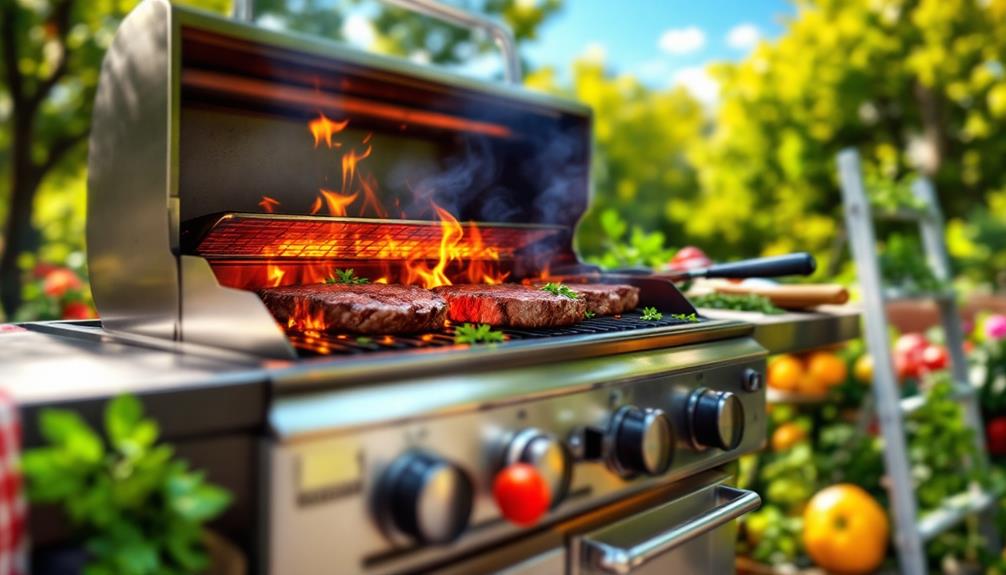When you're grilling beef, the right techniques can transform a simple meal into a gourmet experience. You'll want to consider factors like cut selection and seasoning, as well as the importance of mastering temperature control and grilling methods. Each element plays a crucial role in flavor and tenderness, but what really makes the difference are the advanced finishing techniques that elevate your dish to the next level. Curious about how these methods can change your approach to beef grilling? Let's explore the nuances that can make your next cookout unforgettable.
Key Takeaways
- Utilize a combination of direct and indirect grilling methods for optimal cooking of different beef cuts, ensuring even doneness.
- Preheat your grill effectively and understand heat zones to control cooking temperatures and achieve desired doneness.
- Season beef at least an hour before grilling using kosher salt, garlic powder, or spices like paprika for deeper flavor penetration.
- Implement advanced techniques like basting with butter and herbs during the last minutes of grilling to enhance moisture and flavor.
- Allow beef to rest for 5-10 minutes post-grilling to redistribute juices, resulting in a more tender and flavorful final dish.
Choosing the Right Cuts
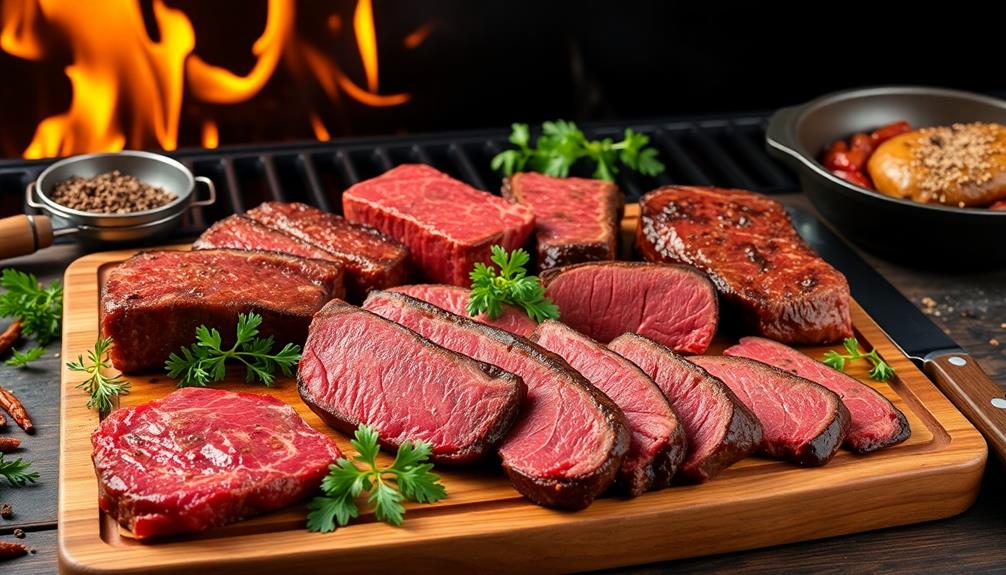
When it comes to grilling beef, the right cut can make all the difference in creating a mouthwatering meal. You want to choose cuts that not only taste great but also hold up well to the grilling process. For a classic option, consider ribeye. Its marbling gives it rich flavor and tenderness that'll impress your guests. If you're after something leaner, flank steak is a fantastic choice. It's flavorful and becomes incredibly tender when grilled correctly.
Don't overlook sirloin, either. It's versatile and often more affordable, making it ideal for larger gatherings. If you're feeling adventurous, try skirt steak. It has a strong beefy flavor and works wonderfully with marinades, perfect for tacos or fajitas.
Seasoning for Maximum Flavor
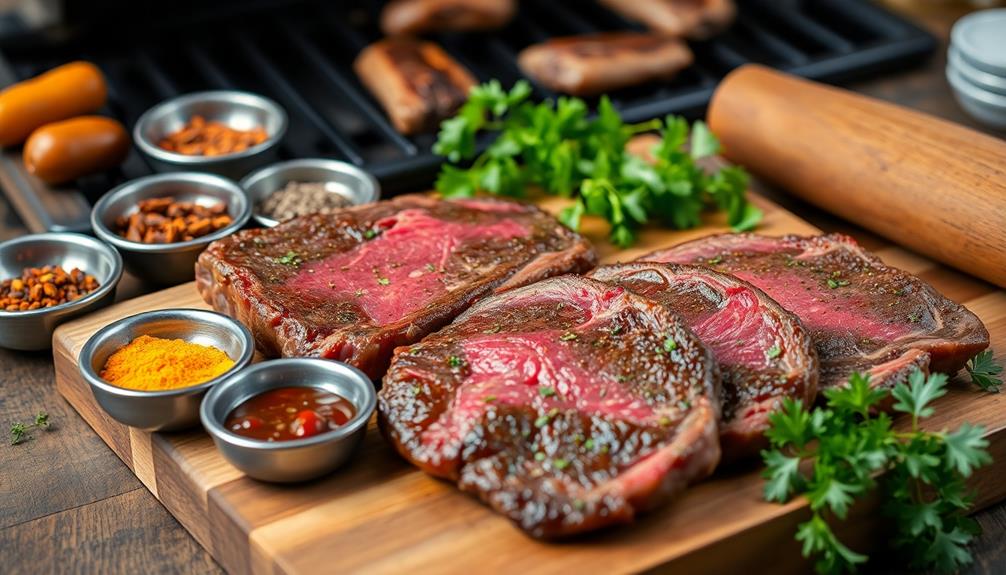
To elevate the flavor of your grilled beef, mastering the art of seasoning is essential. A well-seasoned piece of meat can transform a simple meal into a culinary delight. Start with the basics: salt and pepper. They enhance the natural flavors of the beef without overpowering it. Use kosher salt for a coarser texture and even distribution.
Experiment with different seasoning blends to find what you love. Here's a quick reference table to help you choose a seasoning that suits your taste:
| Seasoning Blend | Best for |
|---|---|
| Garlic Powder | Ribeye, Flank |
| Paprika & Cumin | Brisket, Chuck |
| Herb Mix (Thyme, Oregano) | Sirloin, Tenderloin |
Don't forget to season ahead of time! Applying your seasoning at least an hour before grilling allows the flavors to penetrate the meat. If you're feeling adventurous, try a marinade for added depth. Let your beef soak up those flavors, and you'll be rewarded with a mouthwatering dish. Remember, the right seasoning is your secret weapon in achieving maximum flavor!
Grilling Methods and Equipment
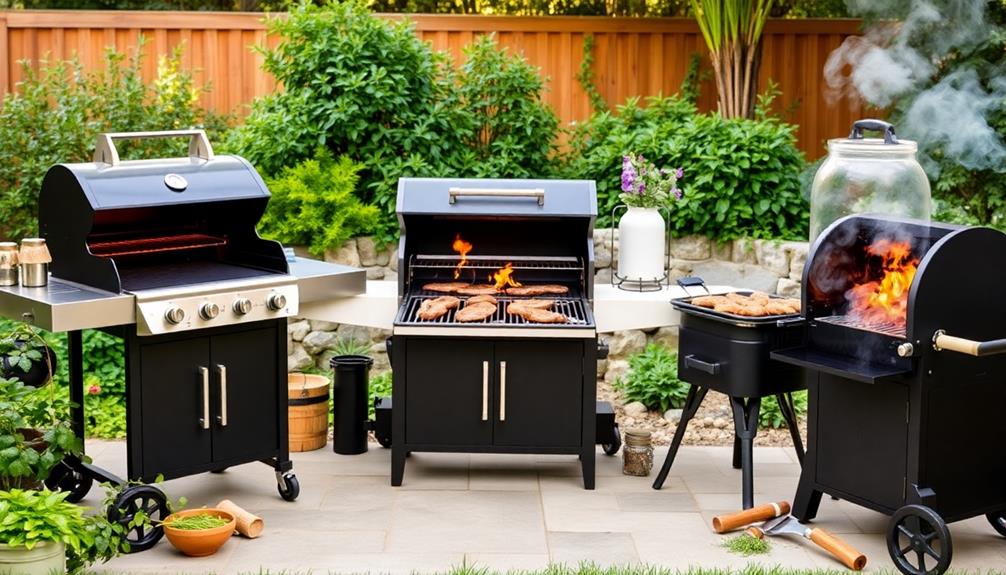
Understanding the various grilling methods and equipment available can significantly enhance your outdoor cooking experience. Whether you're a novice or a seasoned griller, choosing the right technique and tools can make all the difference in the outcome of your beef.
Here are three popular grilling methods you should consider:
- Direct Grilling: This method involves cooking your beef directly over the heat source. It's perfect for burgers and steaks, allowing for a quick sear and those coveted grill marks.
- Indirect Grilling: When you want to cook larger cuts of beef, indirect grilling is the way to go. You'll place the meat away from direct heat, using the grill's ambient heat to cook it slowly and evenly. This is ideal for roasts or whole cuts.
- Smoking: If you're after that deep, smoky flavor, consider using a smoker or adding wood chips to your grill. This method takes longer but can yield incredibly tender and flavorful beef, perfect for briskets or ribs.
Mastering Temperature Control
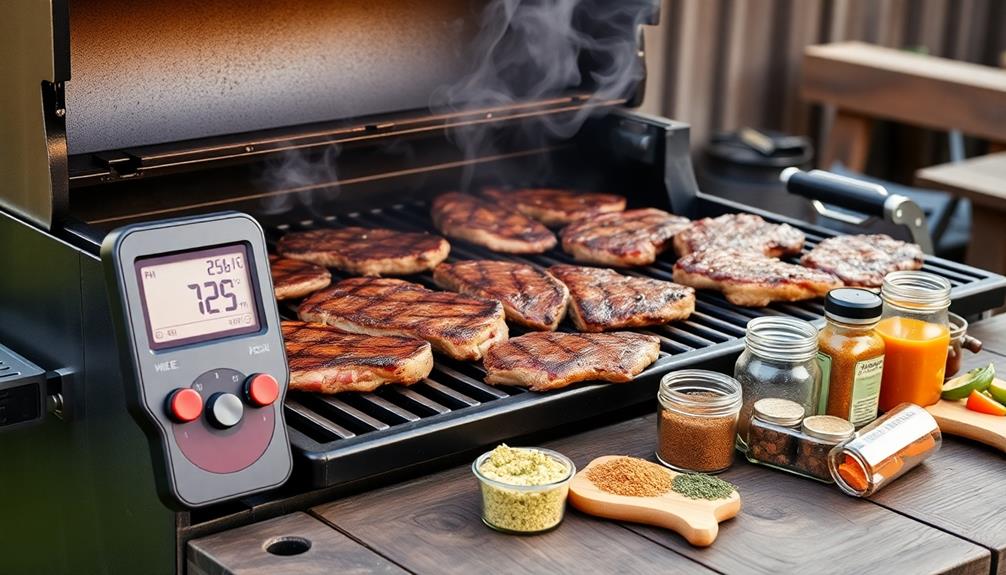
Mastering temperature control is crucial for achieving perfectly grilled beef. Whether you're using a gas grill or charcoal, understanding the heat zones is your first step. Start by preheating your grill to ensure even cooking. For gas grills, adjust the knobs to create direct and indirect heat zones. If you're on charcoal, bank the coals to one side for a similar effect.
Use a reliable meat thermometer to check internal temperatures. For medium-rare beef, aim for 130-135°F; for medium, 140-145°F. Insert the thermometer into the thickest part of the meat, avoiding bone for accurate readings. Remember, beef continues to cook after it's off the grill, so factor in a few degrees for carryover cooking.
Don't be afraid to adjust your grill's temperature during cooking. If the beef is browning too quickly, move it to indirect heat. Conversely, if it's cooking too slowly, increase the heat. Finally, let your beef rest for at least five minutes after grilling. This allows juices to redistribute, ensuring a juicy and flavorful final product. With practice, you'll become adept at managing temperature, turning out delicious grilled beef every time.
Advanced Finishing Techniques
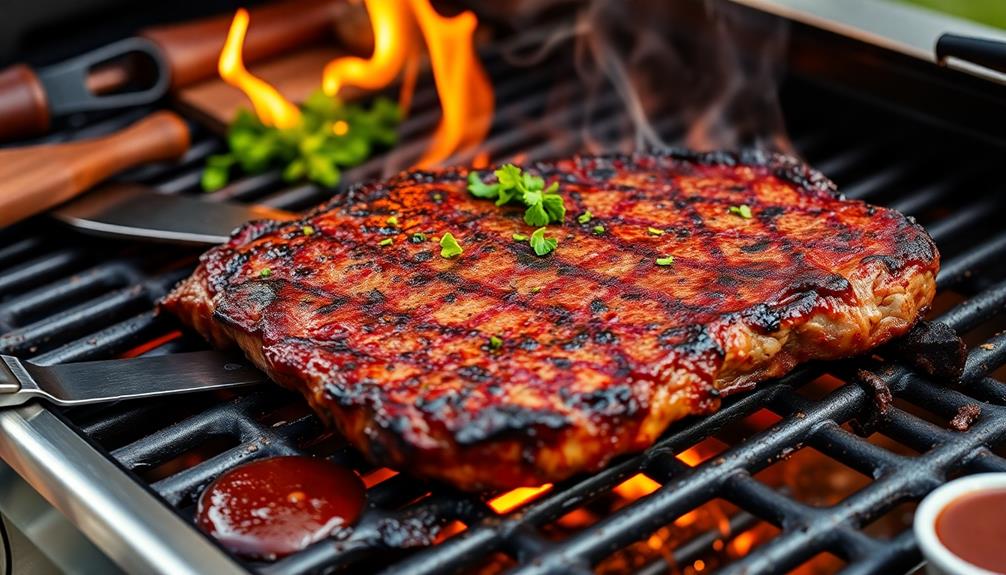
Once you've nailed the temperature control, it's time to elevate your grilling game with advanced finishing techniques. These techniques add flavor and texture, transforming your beef into a culinary masterpiece. Here are three methods you should definitely try:
- Searing: After reaching your desired doneness, crank up the heat for a quick sear. This caramelizes the outside, enhancing the beef's flavor while creating a delicious crust.
- Basting: Use a mixture of melted butter, herbs, and garlic to baste your beef during the last few minutes of grilling. This not only adds moisture but infuses rich flavors that'll make your taste buds sing.
- Resting: Don't skip this crucial step! Once you take your beef off the grill, let it rest for at least 5-10 minutes. This allows the juices to redistribute, ensuring every bite is juicy and tender.
Frequently Asked Questions
What Are the Best Side Dishes to Serve With Grilled Beef?
When you're grilling beef, consider serving classic sides like roasted vegetables, garlic mashed potatoes, or a fresh garden salad. These complement the meat well and enhance the overall dining experience, making your meal unforgettable.
How Can I Marinate Beef for Optimal Tenderness?
To marinate beef for optimal tenderness, you'll want to use acidic ingredients like vinegar or citrus juice. Combine them with oil and spices, then let the beef soak for at least a couple of hours. Enjoy!
What Type of Wood Is Best for Smoking Beef?
When smoking beef, you'll find that hickory and mesquite deliver robust flavors. If you prefer a milder taste, try apple or cherry wood. Experiment with different types to discover your favorite combination that enhances the beef's natural taste.
How Do I Store Leftover Grilled Beef Properly?
After a backyard barbecue, you should wrap leftover grilled beef tightly in aluminum foil or plastic wrap. Store it in the fridge for up to three days, ensuring it stays fresh for your next meal.
Can I Grill Beef in Winter? if So, How?
Yes, you can grill beef in winter! Just make sure to preheat your grill properly, use a windbreak, and keep the lid closed while cooking. Enjoy those delicious winter grilled flavors without hassle!
Conclusion
In the world of grilling, think of yourself as a skilled artist, painting a masterpiece on the canvas of your grill. Each cut of beef is a vibrant color, seasoning is your brush, and temperature control is the steady hand guiding your strokes. With advanced techniques as your palette, you're not just cooking; you're creating a symphony of flavors. As you savor the final product, remember: every great work deserves a moment to rest, allowing its true beauty to shine.
